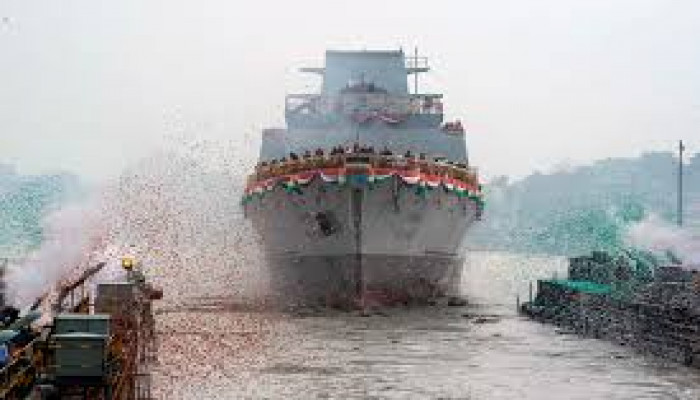India joins US-led naval alliance amid China's escalatory aggression in South China Sea
- In Reports
- 09:58 PM, May 11, 2024
- Myind Staff
Tensions in the South China Sea have been ongoing for years, primarily due to competing territorial claims among countries in the region, including China, Vietnam, the Philippines, and others. The Paracel Islands, claimed by both China and Vietnam, have been a particular point of contention.
China's response to the USS Halsey's presence in what it considers its territorial waters reflects its assertive stance in asserting sovereignty over these disputed areas. By monitoring and warning off the USS Halsey, China is sending a clear message that it will not tolerate what it perceives as intrusions into its claimed territory.
This incident underscores the broader geopolitical tensions in the region, where the United States has been conducting freedom of navigation operations to challenge what it sees as excessive maritime claims by China. These operations are aimed at upholding the principles of freedom of navigation and maintaining stability in the South China Sea, which is a vital maritime thoroughfare for international trade.
The response from China's Southern Theater Command highlights the ongoing military competition between the United States and China in the Asia-Pacific region. Both countries are seeking to assert their influence and protect their interests, leading to a delicate balancing act that has the potential to escalate tensions further if not carefully managed. Diplomatic efforts and dialogue will be crucial in resolving these disputes peacefully and avoiding conflict.
The US Navy responded by stating that the USS Halsey was exercising navigational rights and freedoms following international law. The destroyer completed its operation near the Paracel Islands and continued on in the South China Sea.
This incident comes amid ongoing tensions between the US and China over the South China Sea, where Beijing's expansive territorial claims clash with those of neighbouring countries and international law.
The naval confrontation occurred against the backdrop of heightened tensions in the South China Sea, with the Philippines engaged in a diplomatic dispute with China over disputed waters. China's claims in the region overlap with those of the Philippines, Vietnam, Indonesia, Malaysia, and Brunei. The Permanent Court of Arbitration in 2016 ruled against Beijing's claims, but China has continued to assert its control over the area.
After the USS Halsey passed through the Taiwan Strait recently, China criticized the action, monitoring the passage with its naval forces. A naval colonel referred to it as "public hype." China maintains its stance that Taiwan is part of its territory and has not dismissed the possibility of using force to reunify the island with the mainland.
India's recent decision to join the Combined Maritime Forces (CMF), a multinational naval alliance led by the US and consisting of 43 partner nations, marks a notable shift from its traditional stance of strategic autonomy. This move comes amid growing maritime activities by China in the Indian Ocean region. By collaborating with CMF, India aims to enhance its ability to counter China's assertive actions at sea, particularly by engaging in joint efforts to combat common threats like drug trafficking. Against the backdrop of escalating tensions in the South China Sea, the actions and reactions of major actors such as the US, China, and India will have significant implications for regional stability and security.
Image Source: AP News







Comments